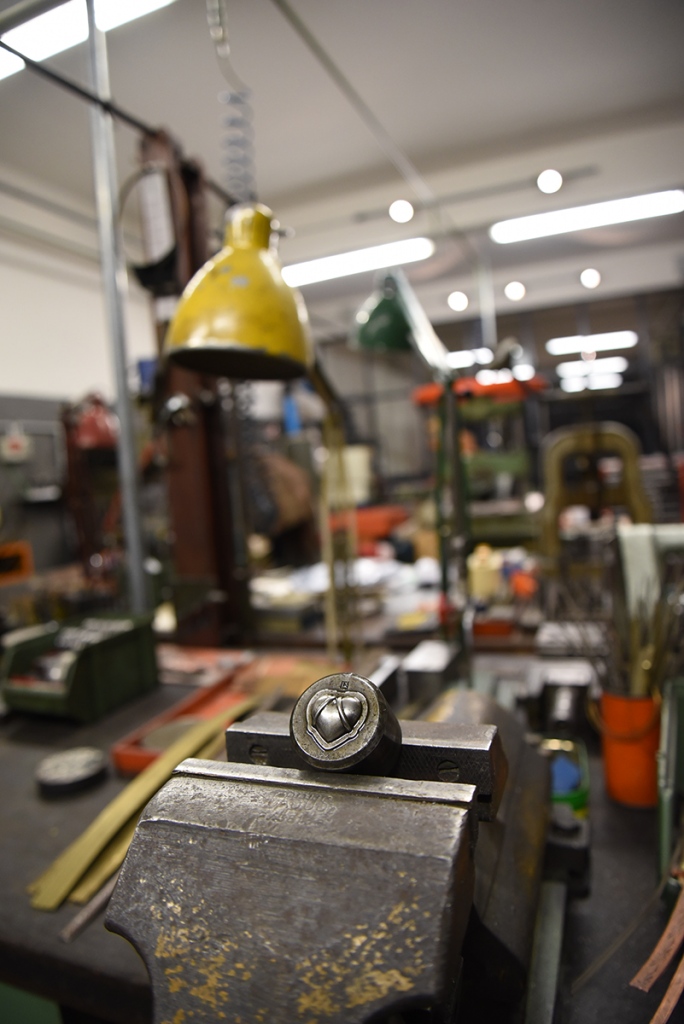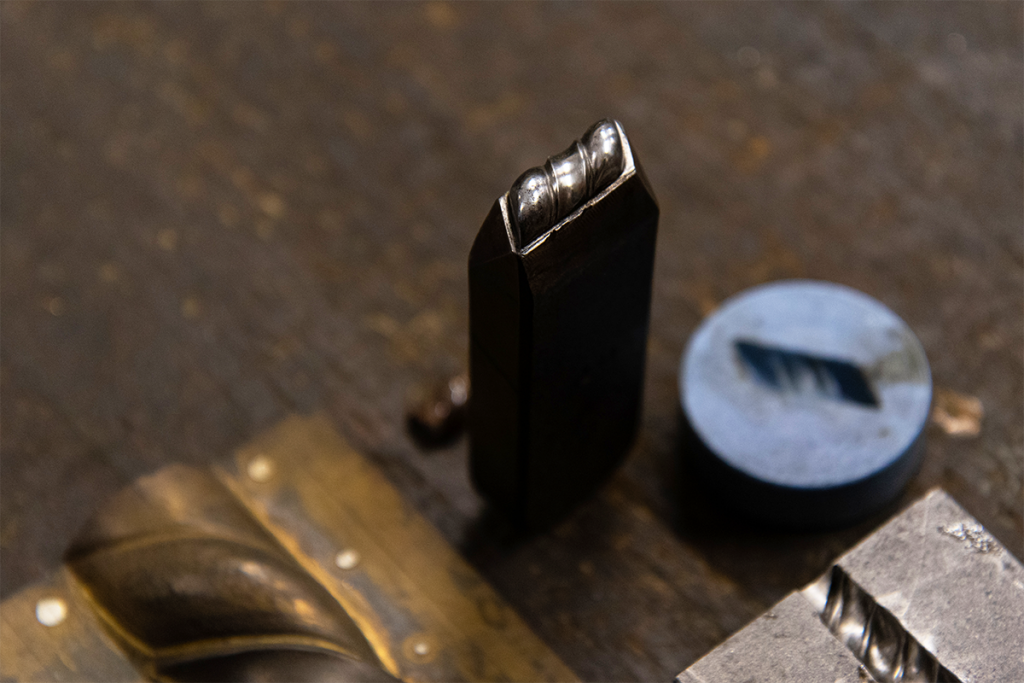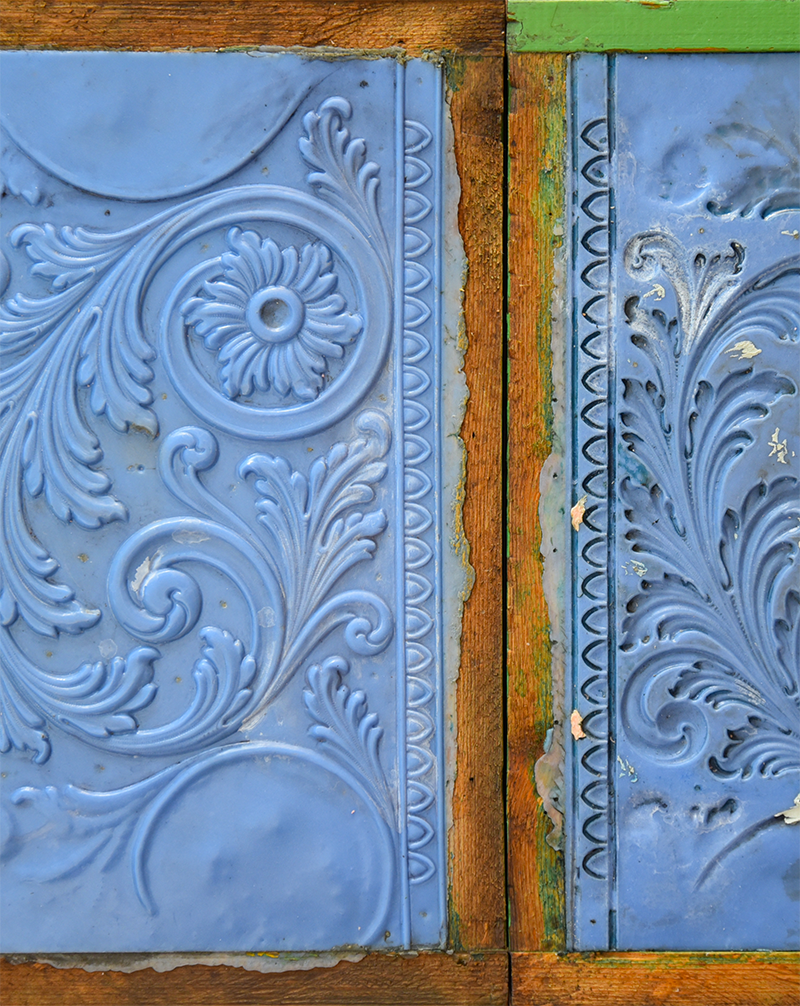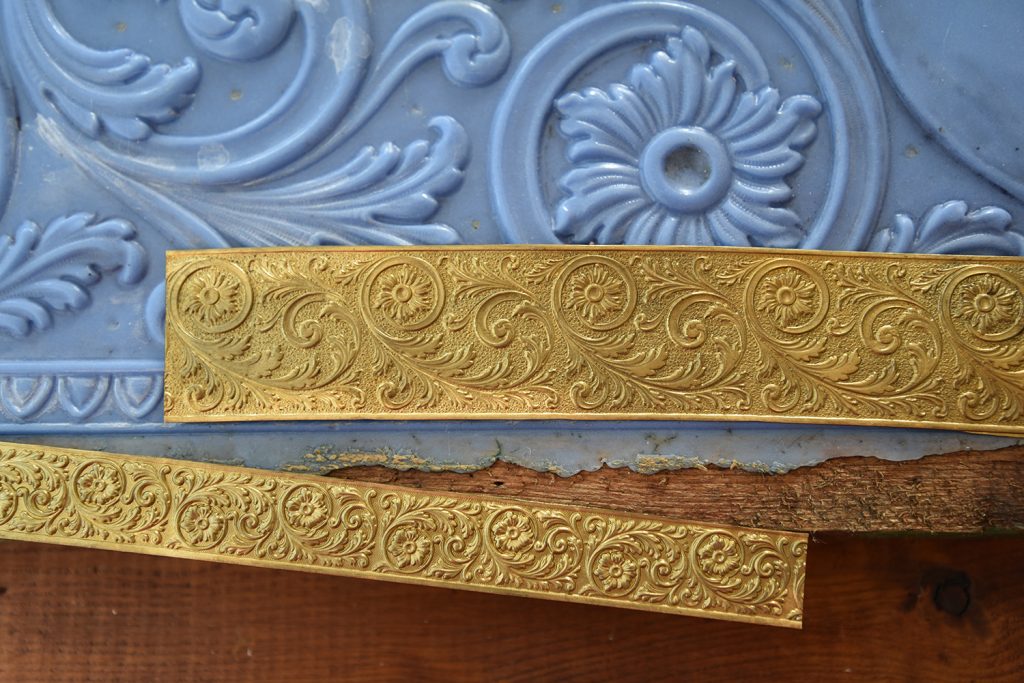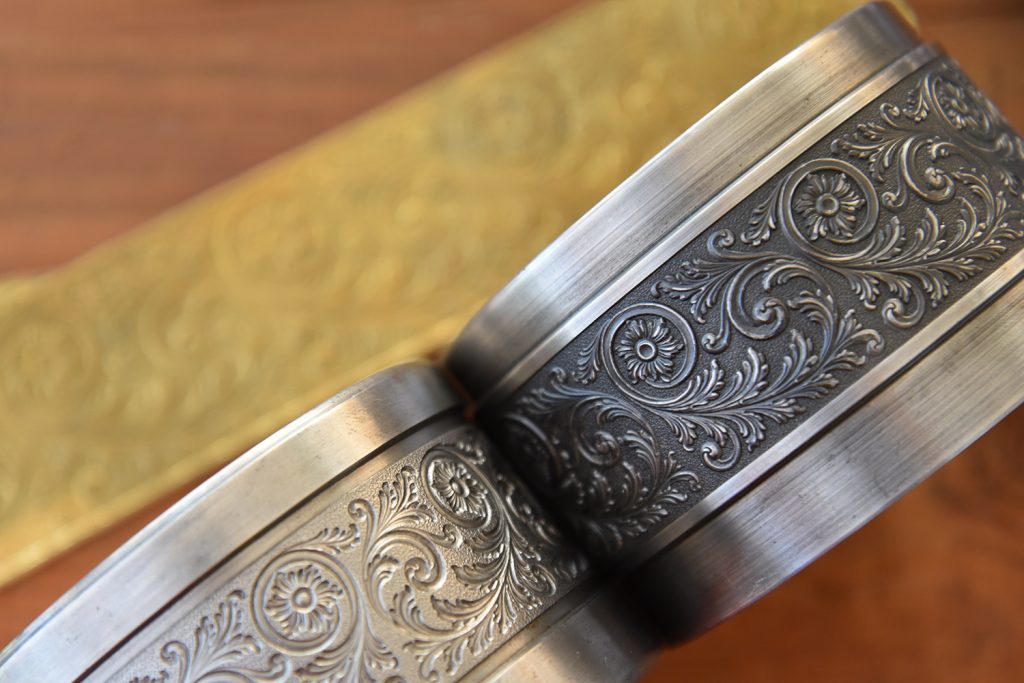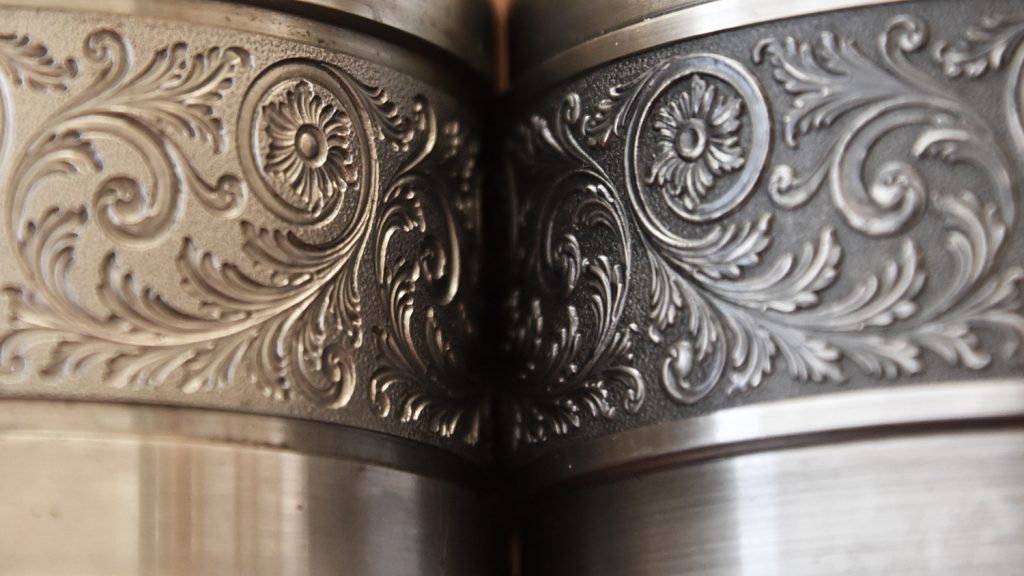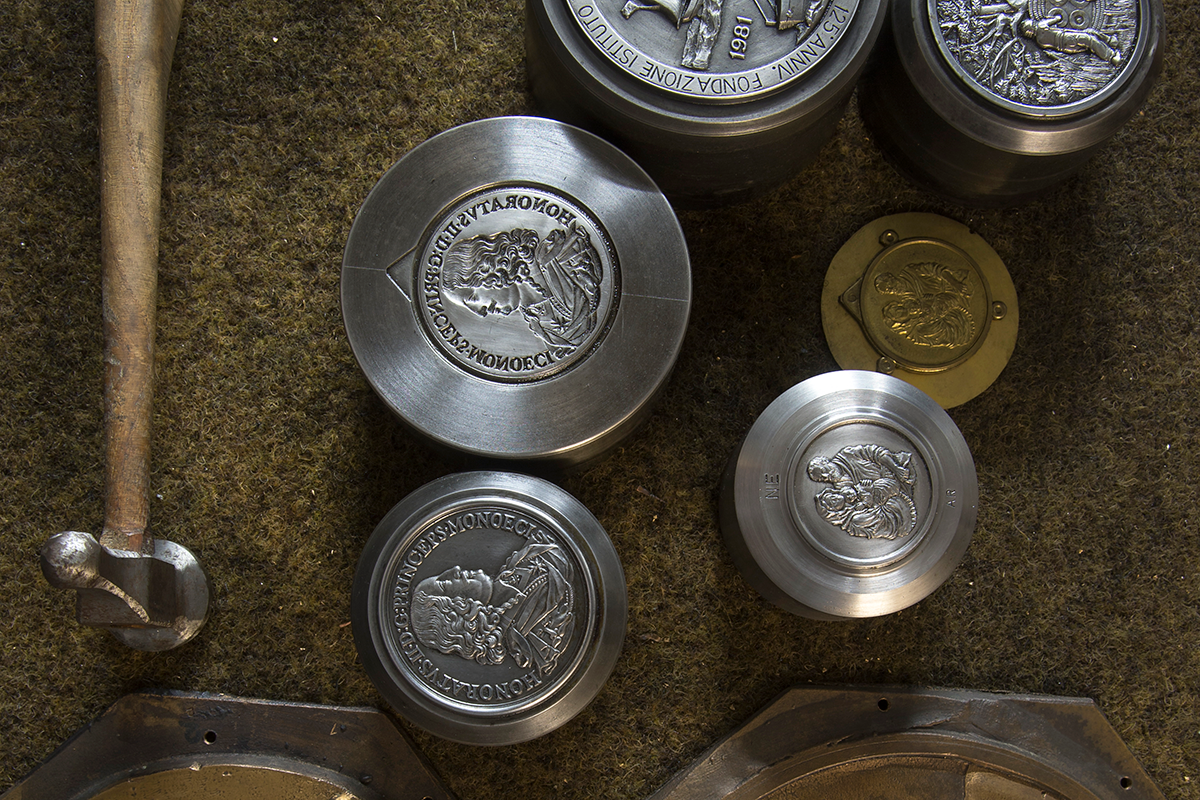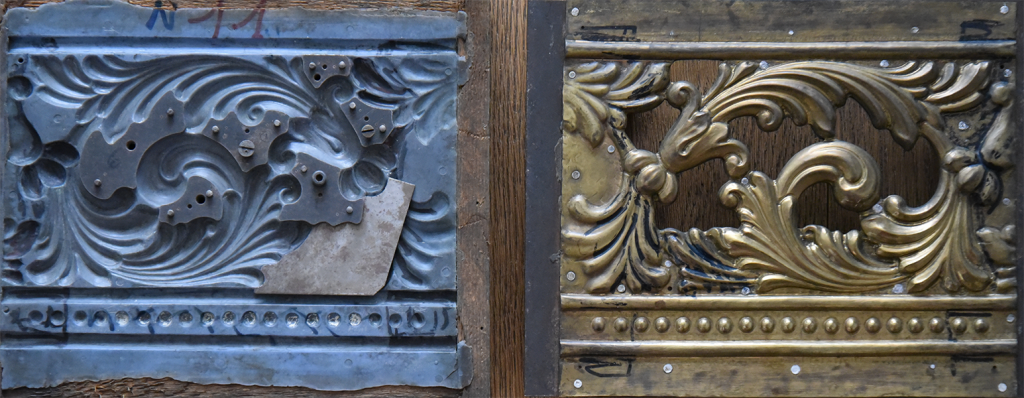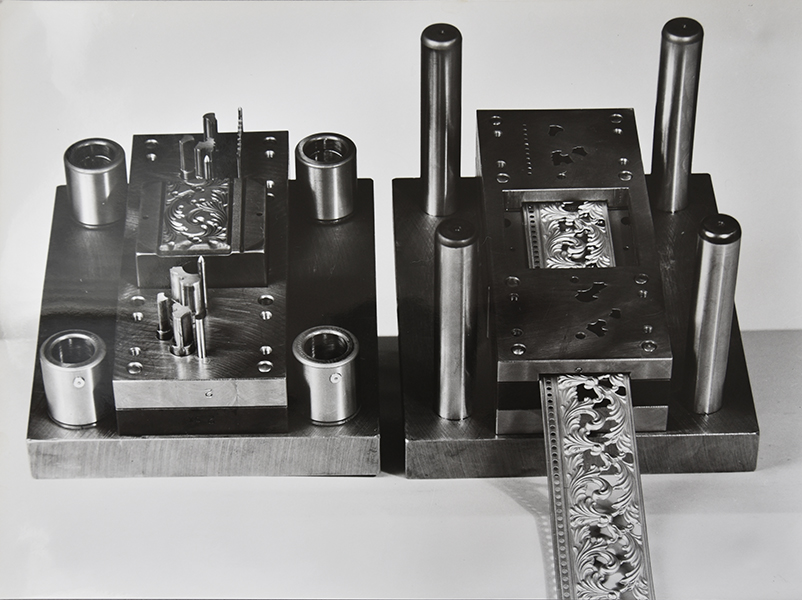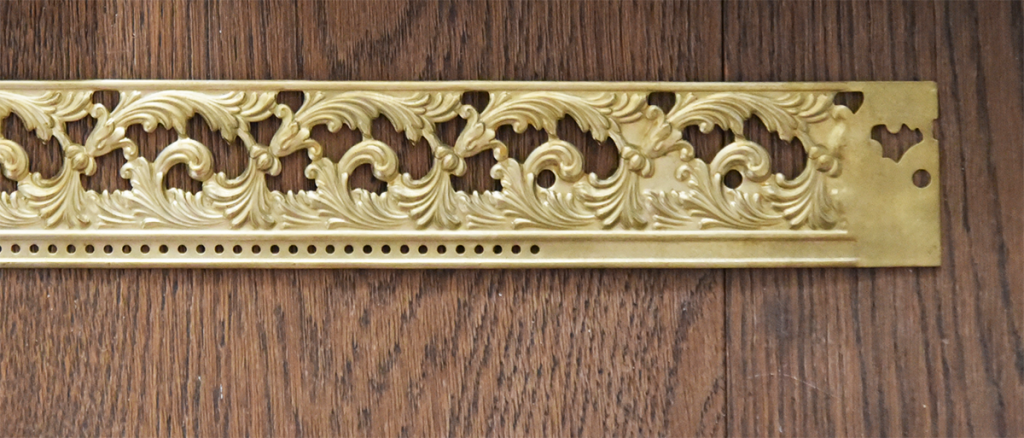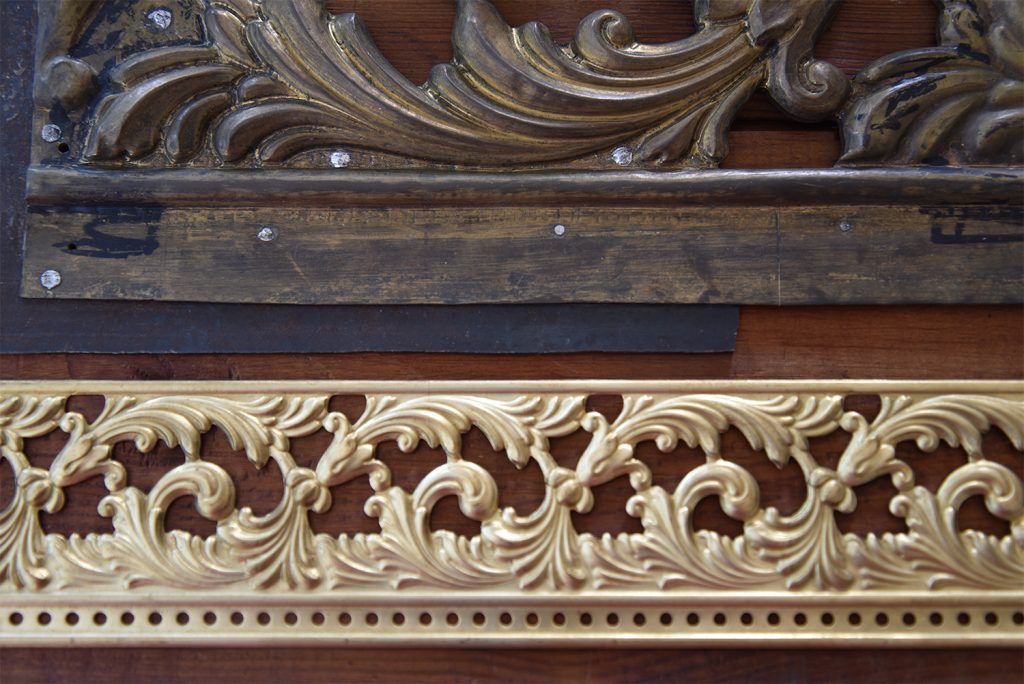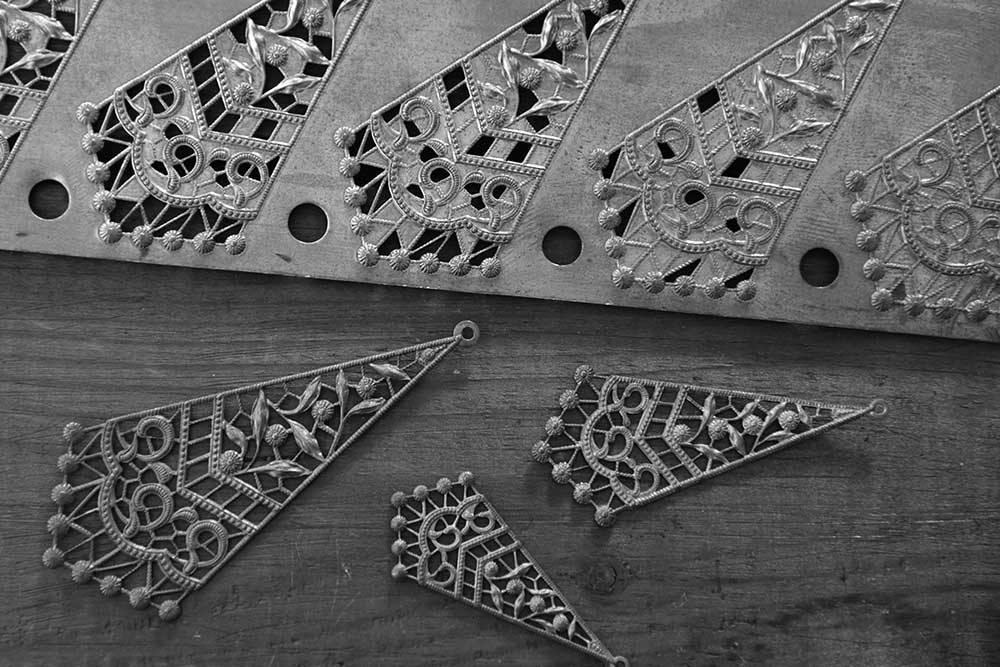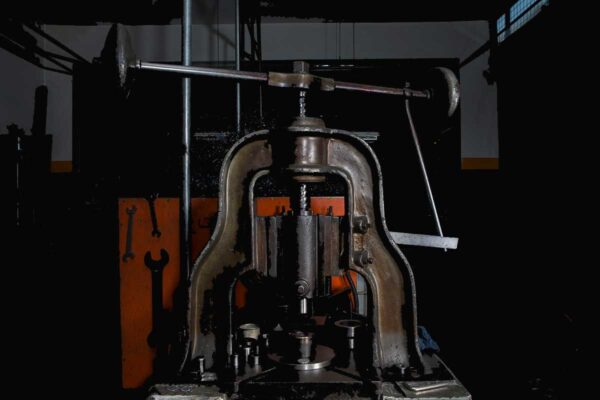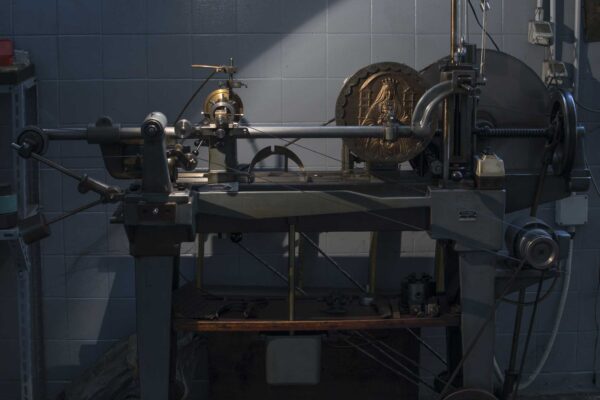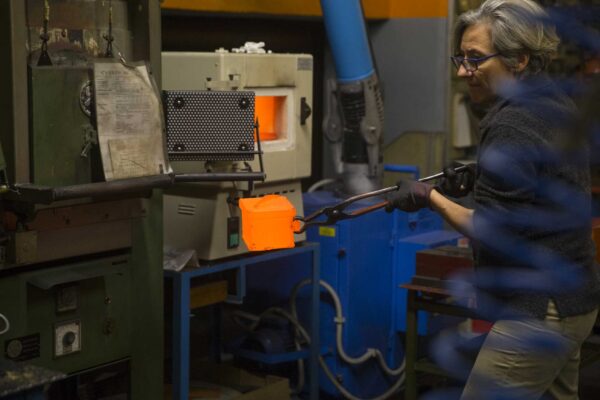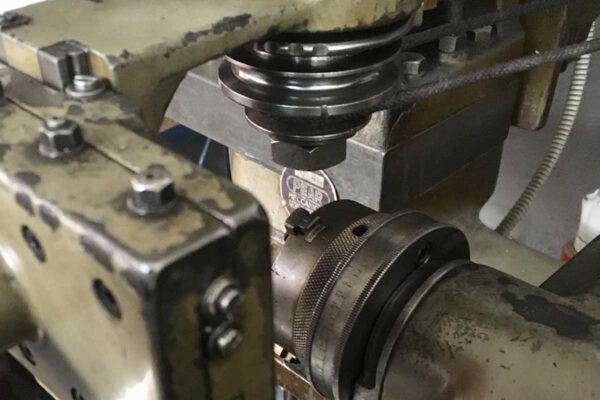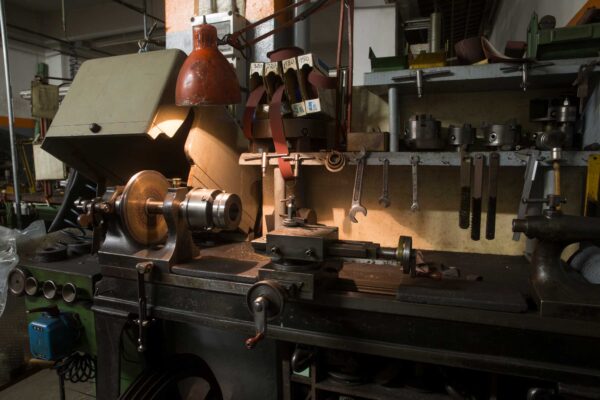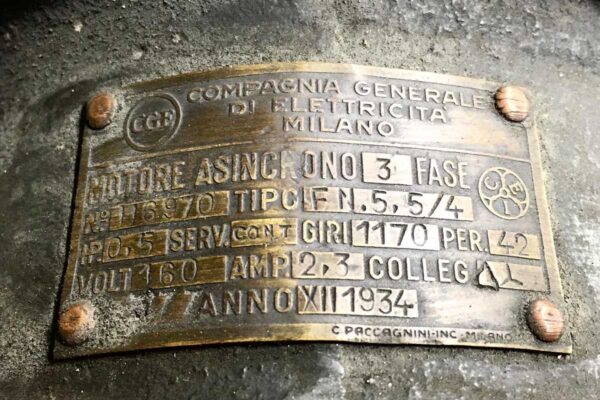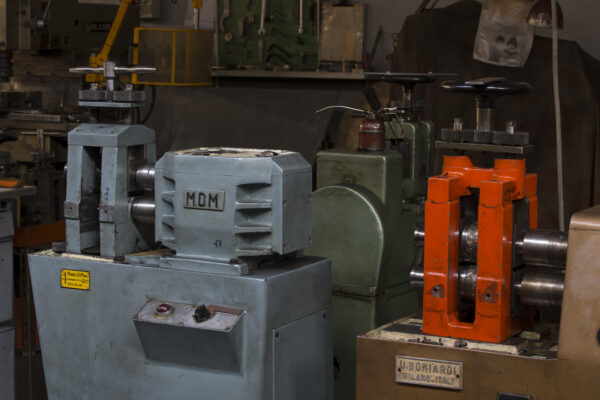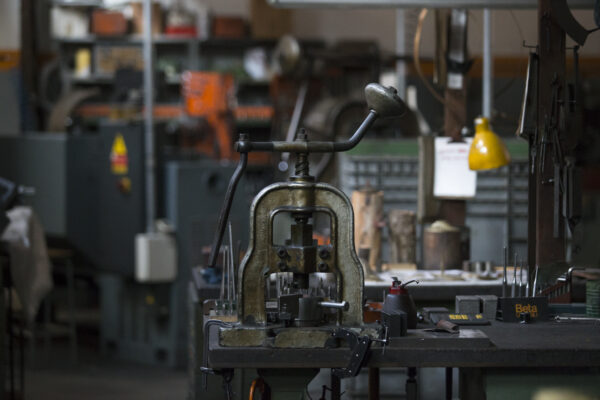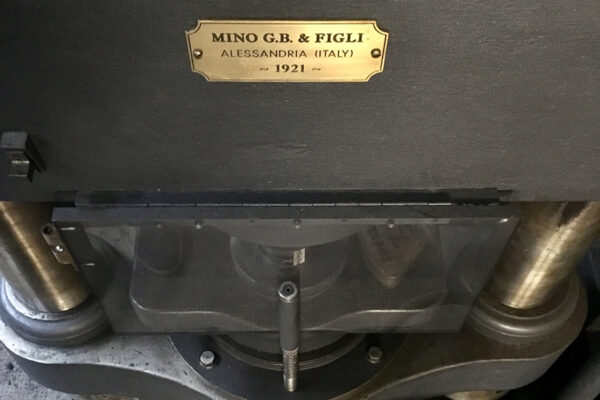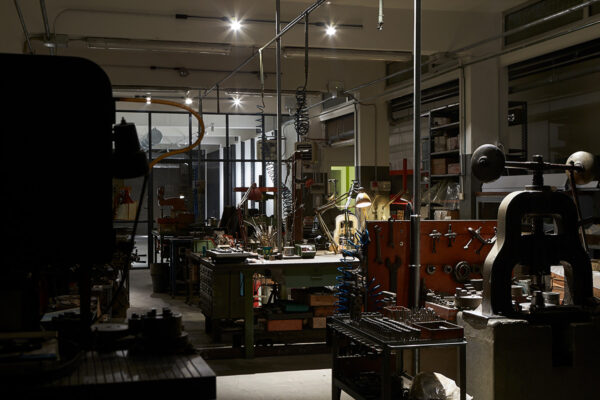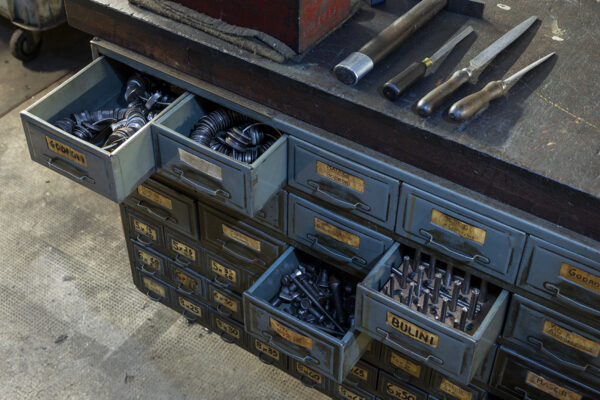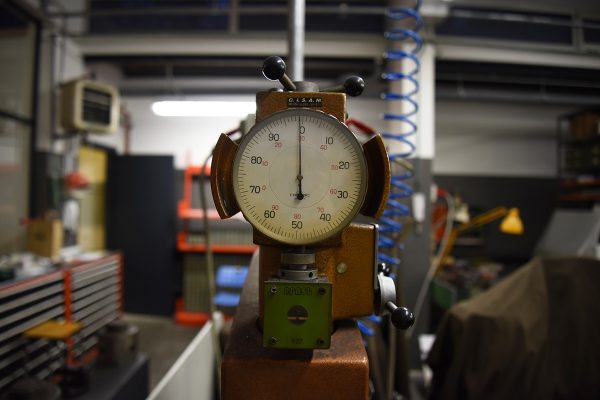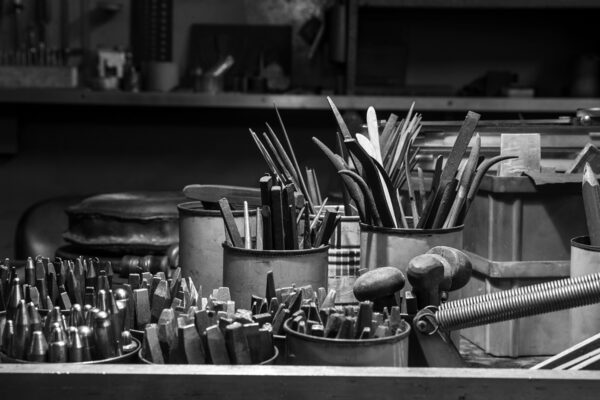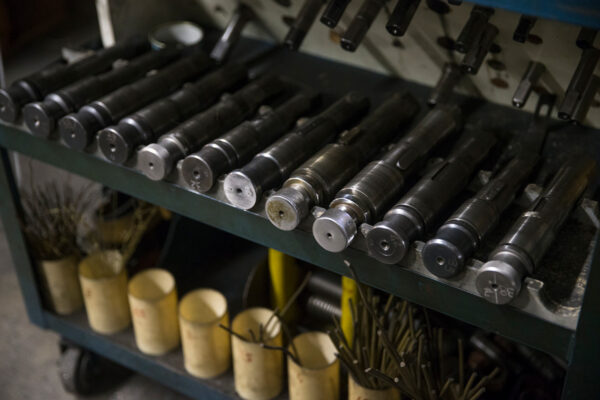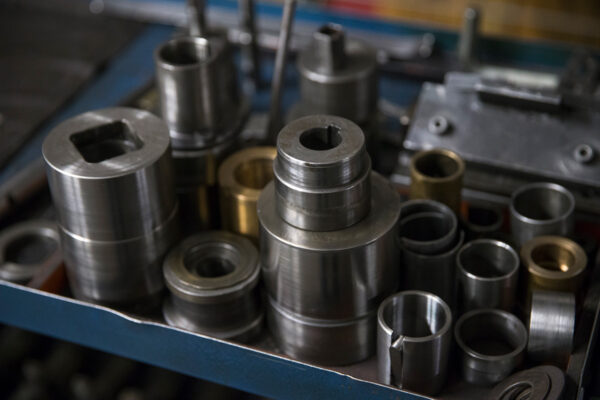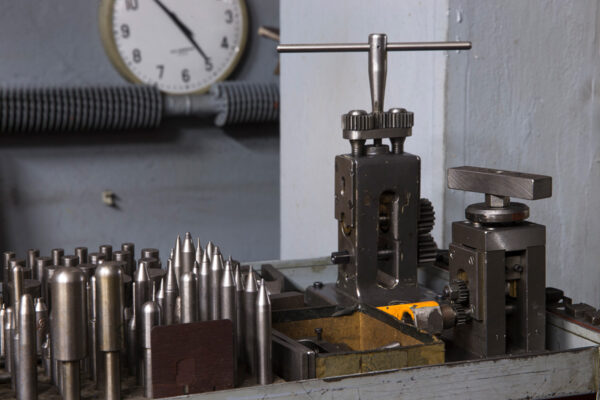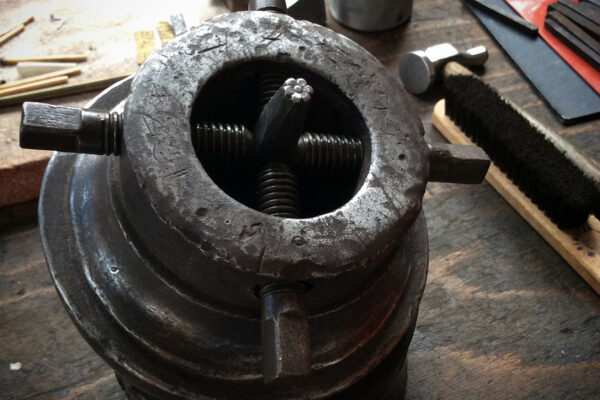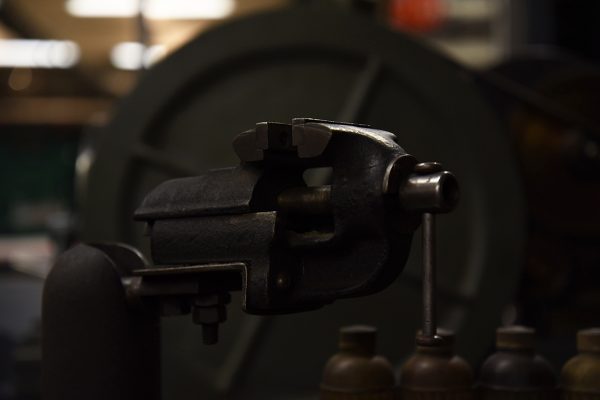knowledge
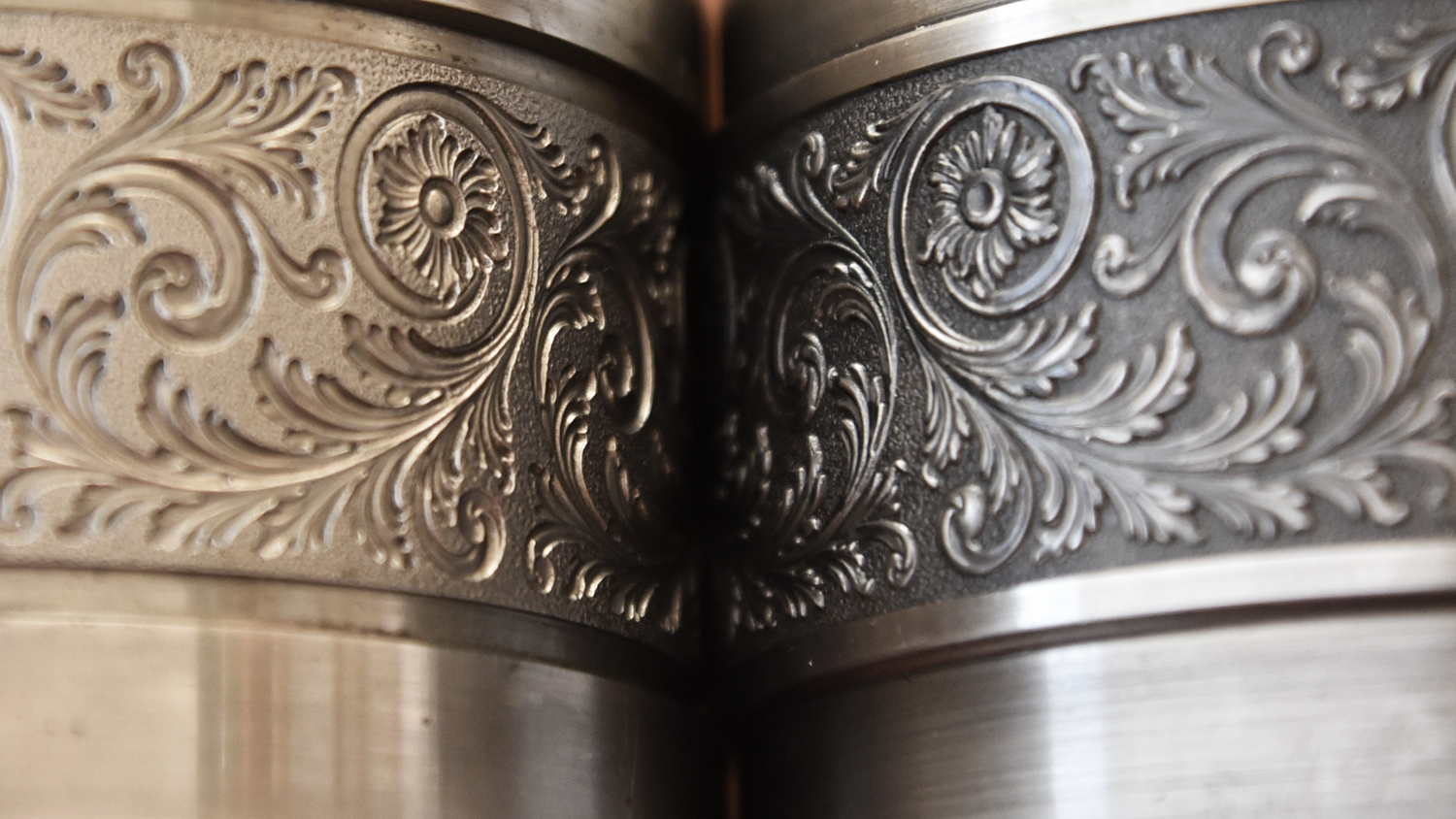
when knowledge means sensibility
In the workshop, not only finished products such as engraved plates, coins or metal plaquettes are created, but also artefacts and tools (pattern rollers, punches and molds) that will be mounted on rolling mills or presses to reproduce ornamental details.
With accuracy and artistic skills, Edoardo Negroni used to transfer the preliminary drawing to the finished object through a process rich in steps and clever solutions. Hundreds of tools, replacements and adapted equipment, stored in the archive today, reflect the socio-technical history of this practice.
The progressive change of techniques and process become the trace of a know-how that still has a lot to offer both to the study of western ornamental iconography of the last century and to the contamination of traditional craft practice with contemporary creativity.
process
There are several steps from drawing to product. Starting with the preliminary drawing, the next step was the technical dimensioned drawing. Then the process split up in two parts: on one hand, the creation of a model, on the other, the construction of a semi-processed piece of steel – the mold – that would become the equipment to be mounted on the rolling mill or under the press. The models were created flat with a fretsaw, rivets and punches, or in bas-relief, hand chiseled with great ability. From the model, the process went on with the engraving of the steel mold – with the scale reduction to the exact dimensions through a flat or three-dimensional pantograph and with the introduction of the cnc-milling, in 1999. Nowadays, the digital techniques allow a much faster and direct modeling. Today’s challenge is to develop a steel matrix that still has manual refining stages. This is to give that unique touch which is achieved through a craft process only.
know how: from drawing to artefact
ROLL-MILLING
from drawing to engraved rollers
In the workshop, pattern rollers for rolling mills were crafted to obtain modeled ornamental borders out of metal bands made of soft brass alloy, copper, aluminum, silver and gold. Unique designs used to be set for the model applied to engrave the rollers, and if it was very detailed, it should be created in cooperation with a chiseler. From the original chisel, the resin mold was obtained and then pantographed in negative, the female shape, and in positive, the male shape. The application of the two shapes was then reduced to appropriate sizes to engrave the full roller’s extension, depending on the given rolling mill‘s specifications.
PRESS STAMPING
from sculpture to medal
Edoardo Negroni has been part of that army of art masters behind the minting of medals, several of these reviewed by Numismatica Italiana (Italian Numismatics).
After receiving the gypsum model from the sculptor, the workshop used to commission the sand casting to achieve the bronze model, from which, once appropriately adapted, the pantograph matrix was made, the so called creatore. With several advancing steps, the stamping was performed, meaning that the coining press made the impression on the production mold, the negative form.
FRETWORK
from chisel to die cutter
Some types of ornamental borders, popular until the 70s, could be obtained with the pressing stage only, producing plates that were against-printed in bas-relief, or with the addition of a fretwork decoration made through the die cutter technique. Specific tools made the plates passing through a precise sequence of cutter and advancing under the press hits (progressive die cutter). In this case, the stamped-and-cut plaquettes resulted in a very light decoration, appropriate to enrich stands for silver centerpieces, crystal bases and precious porcelains, or to be attached to ceiling lights with crystals and art glass.
ECHOES OF GESTURES AND TOOLS THAT TELL STORIES
In full swing, the workshop Edoardo Negroni was characterized by the resounding with repetitive noises and mechanical echoes. Voices would mix with the smell of oils and heated metal, and with the sharp and rhythmic hits of chisels and punches. Even today, in a much more silent workshop, the machinery and craft tools are able to evoke that atmosphere and image of diligence and devotion to craftsmanship. Since 1958 over the course of the years, Attrezzeria Negroni has collected tools and machines that serve today as a crucial proof of the socio-technical evolution of artistic engraving.
The transformation of tools and techniques, used in the making of various components for the equipment, takes shape through the clever solutions developed in the workshop and the concept of original tools, often selfmade, which represent the material culture of a unique and unrepeatable technical heritage.
The rolling mills and traditional machinery are still running for demonstration purposes and meticulously cared for. Maintaining their function means not only preserving their memory, but also bringing into the present the methods, the knowledge and the gestures that have accompanied, and still accompany them.
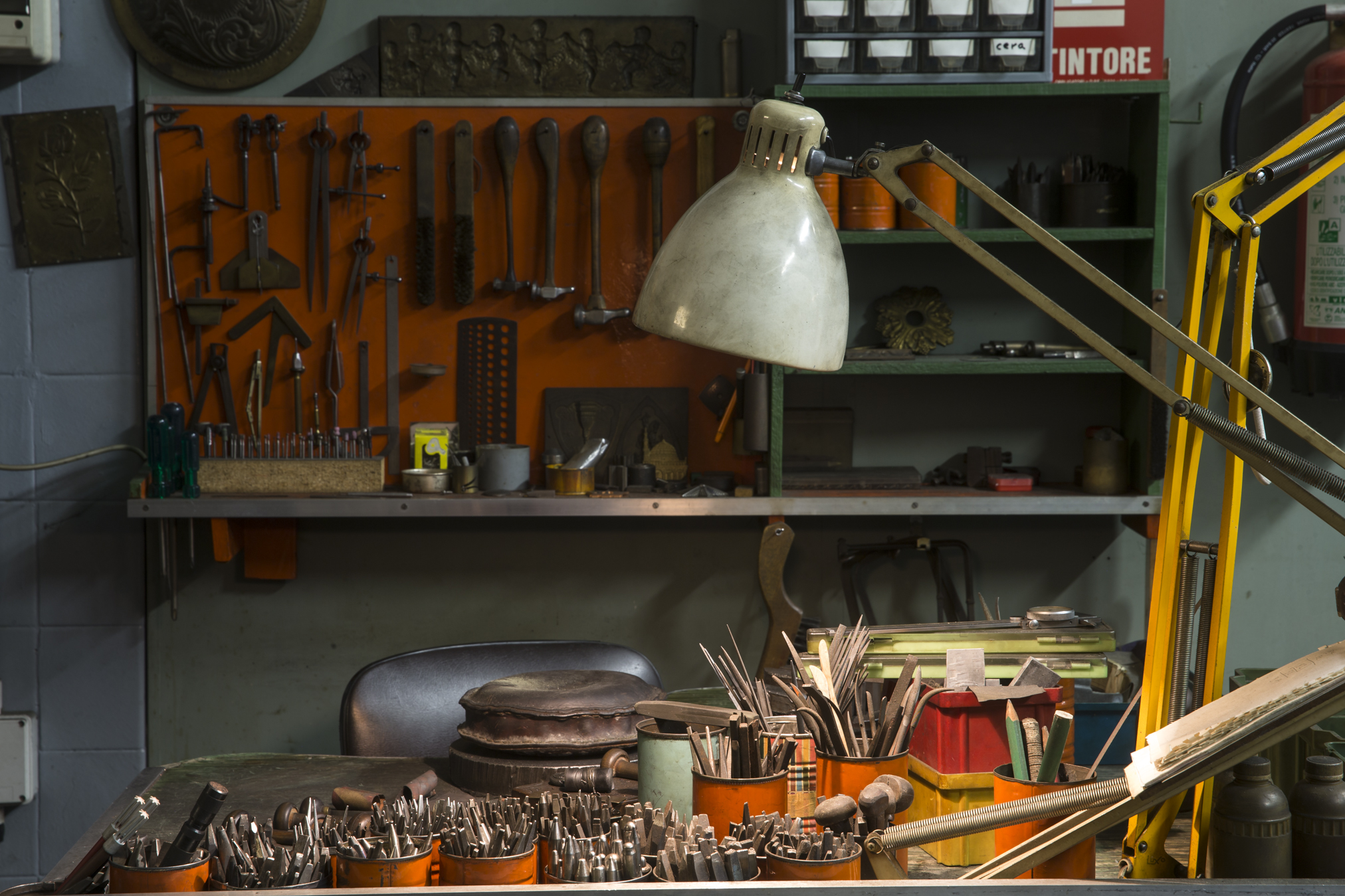
attrezzi originali
Every single machine in the workshop displays a collection of tools and equipments so large that, sometimes, it’s hard to establish their appropriate function. Oftentimes, it’s Edoardo Negroni himself who retraces the right use, thanks to the memory from thousands of hours passed handling the different components with a ritual gestuality: from the screw closing of his boulet (the engraver’s vise to clamp the work) to the way he used to revive the burin’s edge; from the switch on of the English lathe, to the detaching of the bur of the pantograph’s spindle; from the polishing with the emery cloth, to the way he used to compare the dimension of an engraving with the comparison pieces.
THE MACHINERY
Since the 50s until today, the collected machines express the transformation of processing. They are stored in the workshop Attrezzeria Negroni, and they are still operational for demonstration purpose.
rolling mill
This is the main tool in mechanical engraving. This machinery of simple conception might have its origins at the time of the first barbell presses developed in Germany and then refined for Paris mint in the XVI century. Rolling mills for engraving are found in Switzerland and in England in the first half of the XVII century already, finally perfected since the second half of the XIX century. With a manual activation, these machines are useful to flatten compact but malleable materials, such as metals. Motorized versions only appeared in the first half of the last century.
TOOLS
There are hundreds of tools that have been used within the Attrezzeria Negroni: from the oldest to the more recent ones, each has its own specific function.

